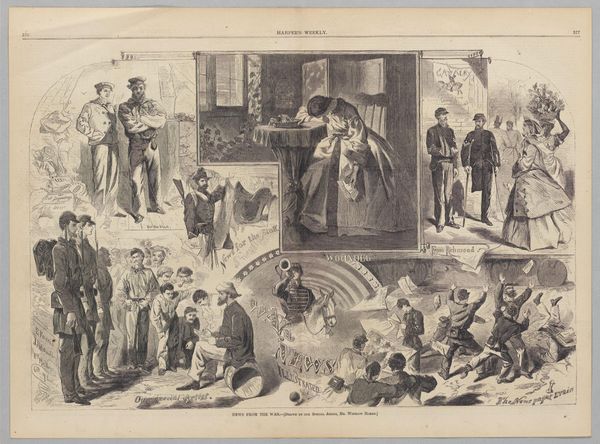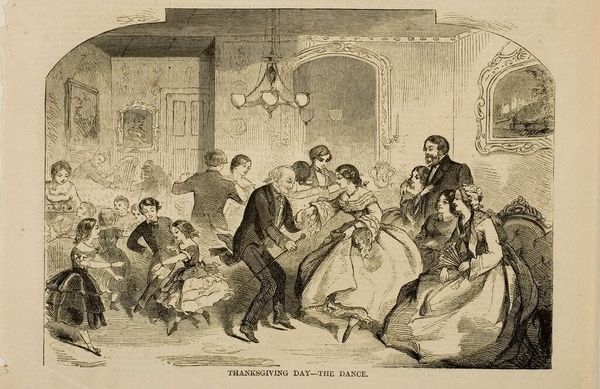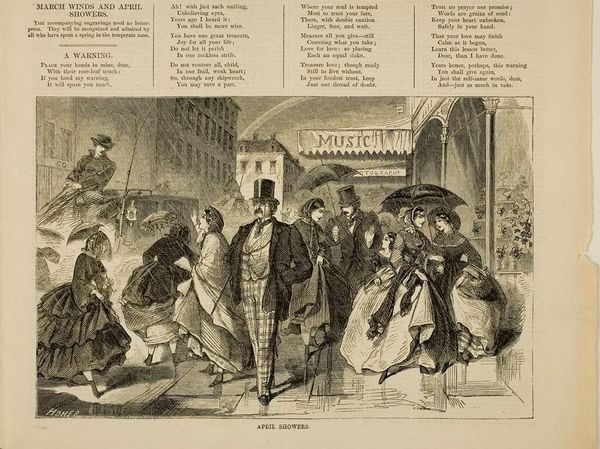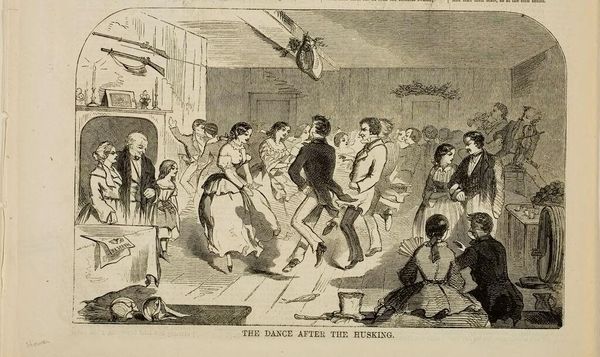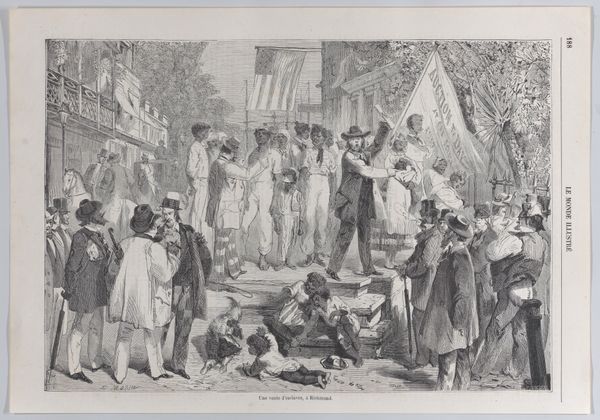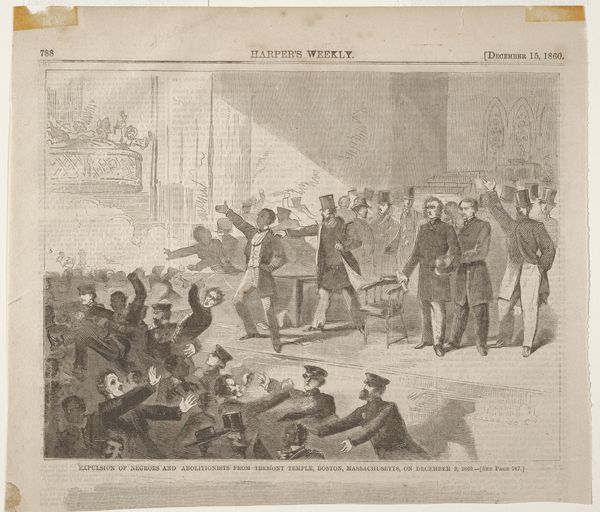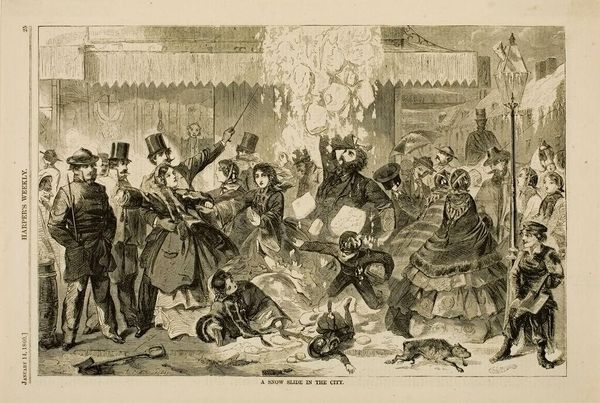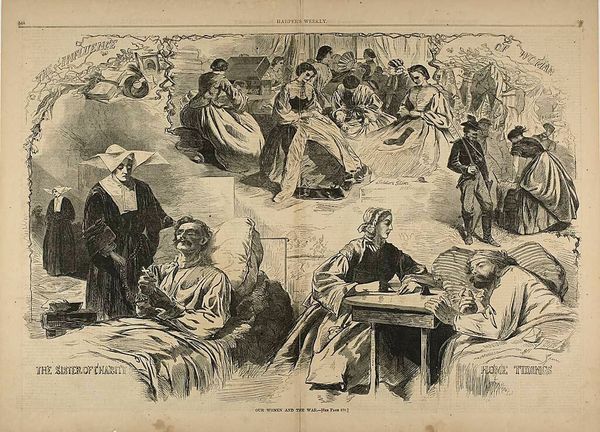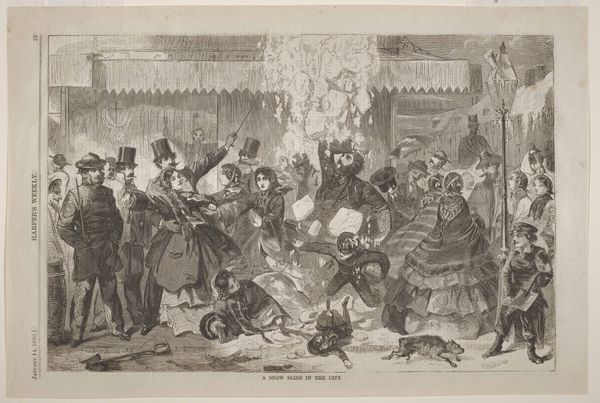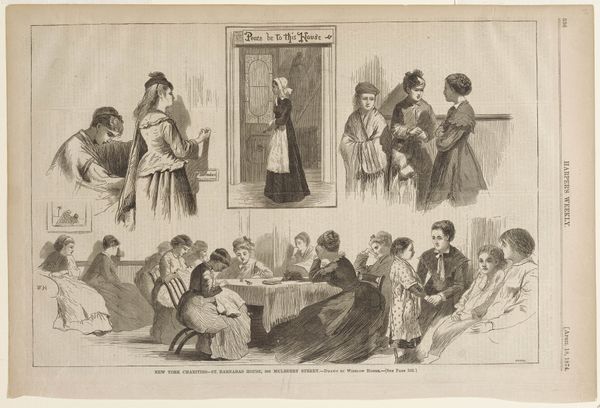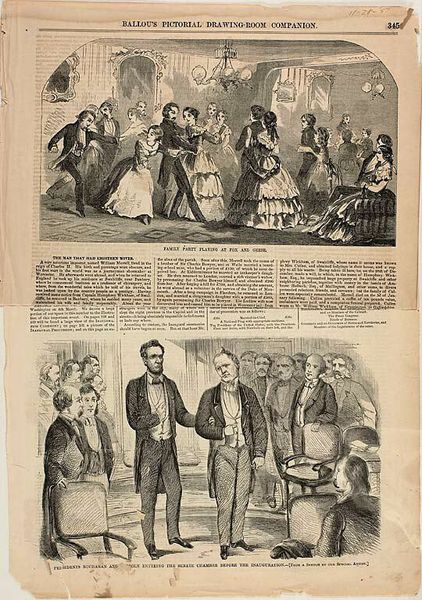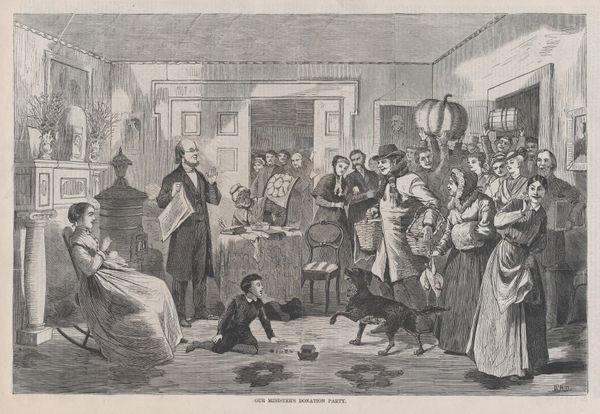
drawing, print, paper, engraving
#
drawing
#
narrative-art
# print
#
paper
#
genre-painting
#
history-painting
#
engraving
#
realism
Dimensions: 339 × 516 mm (image); 397 × 566 mm (sheet)
Copyright: Public Domain
Curator: Winslow Homer’s “News from the War,” possibly from 1862, is an engraving, printed on paper. Editor: My goodness, what a poignant piece. The image just whispers of heartbreak and longing. It's visually so full, like a bursting collage of wartime anxieties, but that central figure – a woman, head in her hands – completely anchors the emotional weight of it all. Curator: Absolutely, there’s a narrative collage feel about the piece. Look how Homer organizes disparate vignettes—soldiers marching, wounded men, a war correspondent—around that central image of domestic grief. What do you read in that clustering? Editor: For me, the strategic use of domestic grief in conjunction with images of active servicemen, marching off, wounded soldiers, speaks volumes about collective memory. Homer subtly weaves together personal sorrow with public duty; it shows how the ripple effects of war stretch far beyond battlefields, directly disrupting people’s family lives and causing them emotional trauma. It reflects how profoundly war was reshaping notions about both home and the individual. Curator: Notice also Homer's careful placement of figures within frames and open spaces; he seems conscious of orchestrating where our eyes travel, much like a stage director. Those tiny figures down to the left, they all seem to face inwards as if converging around the tragedy itself. Editor: And isn't that the magic trick, pulling us in? The seemingly chaotic layout is deliberately constructed so that you read your own sense of trauma and grief back to the page! How incredibly modern this composition feels even today! Curator: In its original context, this image circulated widely as part of a newspaper print. This brings up fascinating ideas around how it shaped public sentiment through visual dissemination. Imagine flipping through a newspaper and suddenly confronting these vivid scenes of national struggle juxtaposed against a solitary moment. What power does the act of sharing pain visually give individuals? Editor: It's an intimate intrusion, really, isn't it? It makes us accomplices to collective remembrance as viewers today and in history itself! Curator: I find it particularly moving how Homer avoids any sense of glorification; the imagery serves almost as a warning, don’t forget to remember what this actually costs us. Editor: Ultimately, for me, Homer manages to distill universal sentiments about sacrifice in his engraving – love, sacrifice, dread – but by concentrating these themes visually within very precise compositional and narrative frames. His storytelling touches hearts everywhere across eras as we empathically continue reflecting our experiences back.
Comments
No comments
Be the first to comment and join the conversation on the ultimate creative platform.
